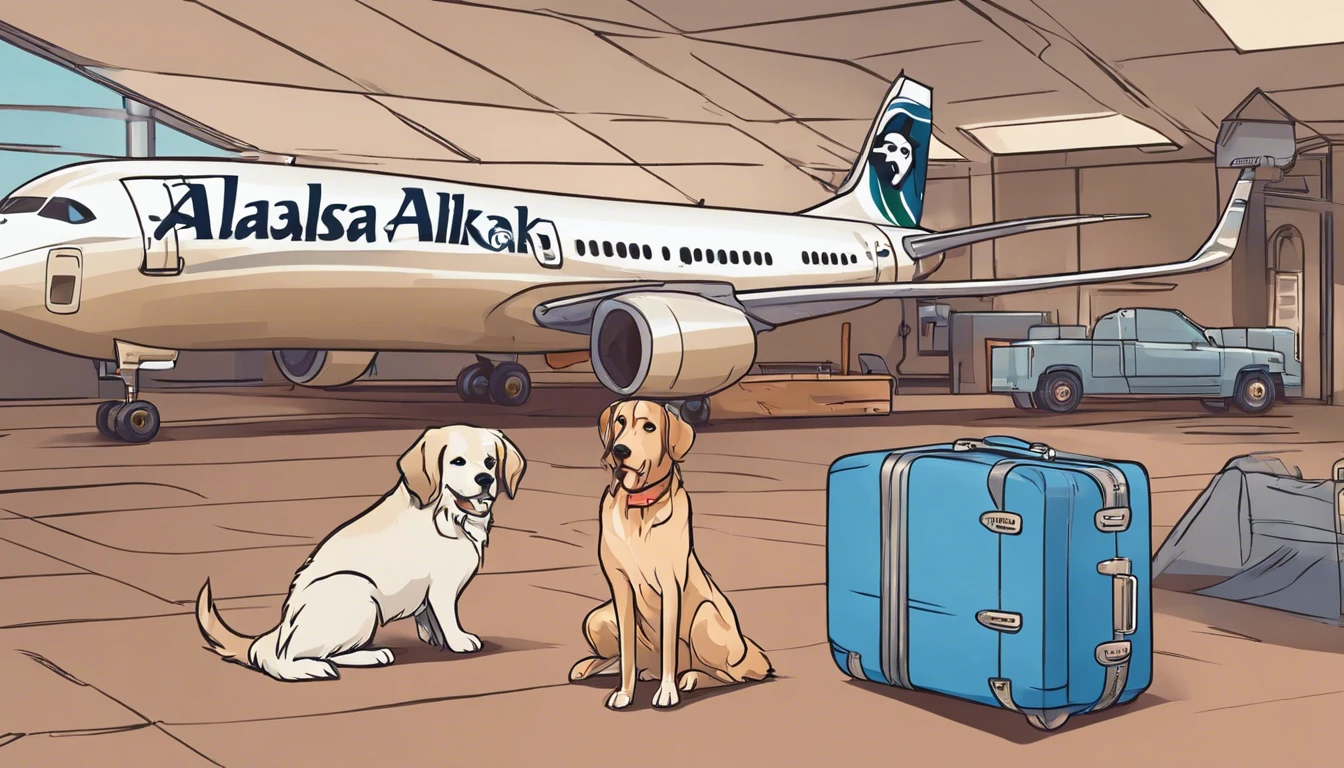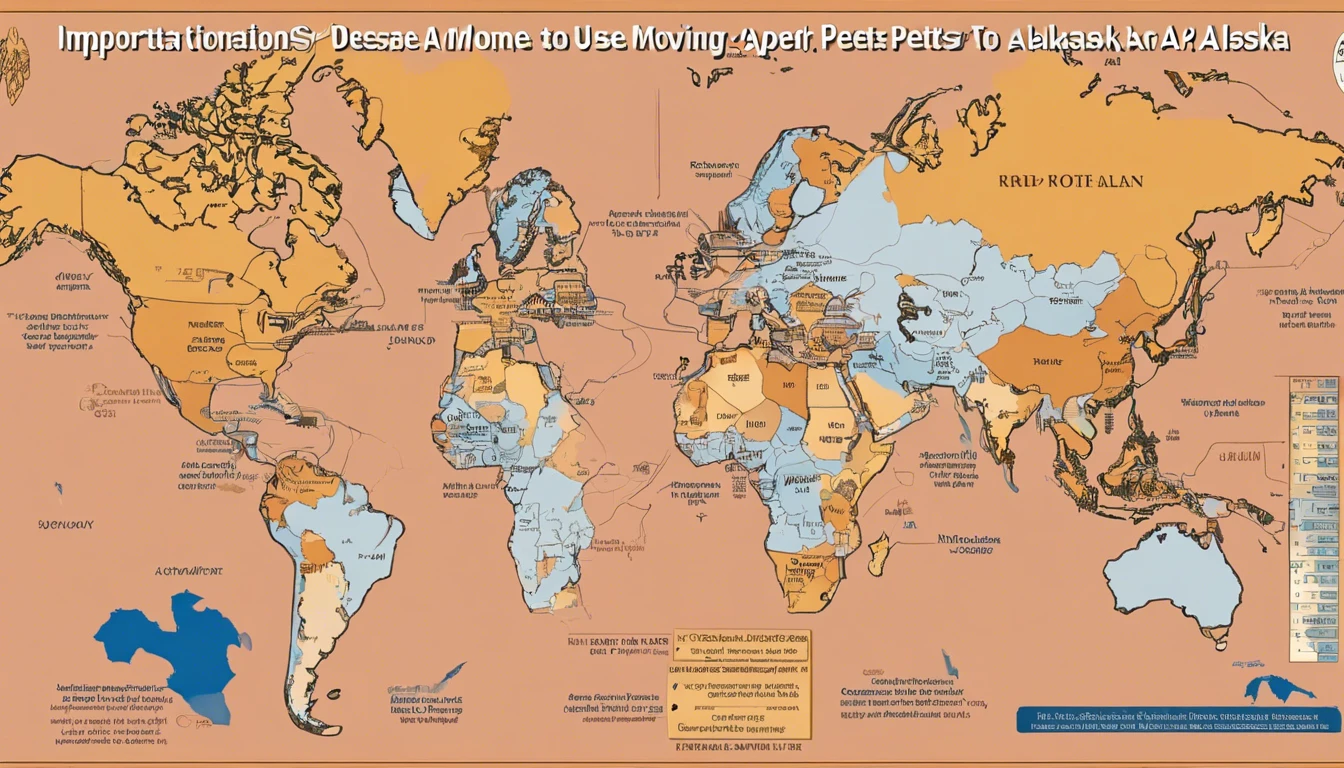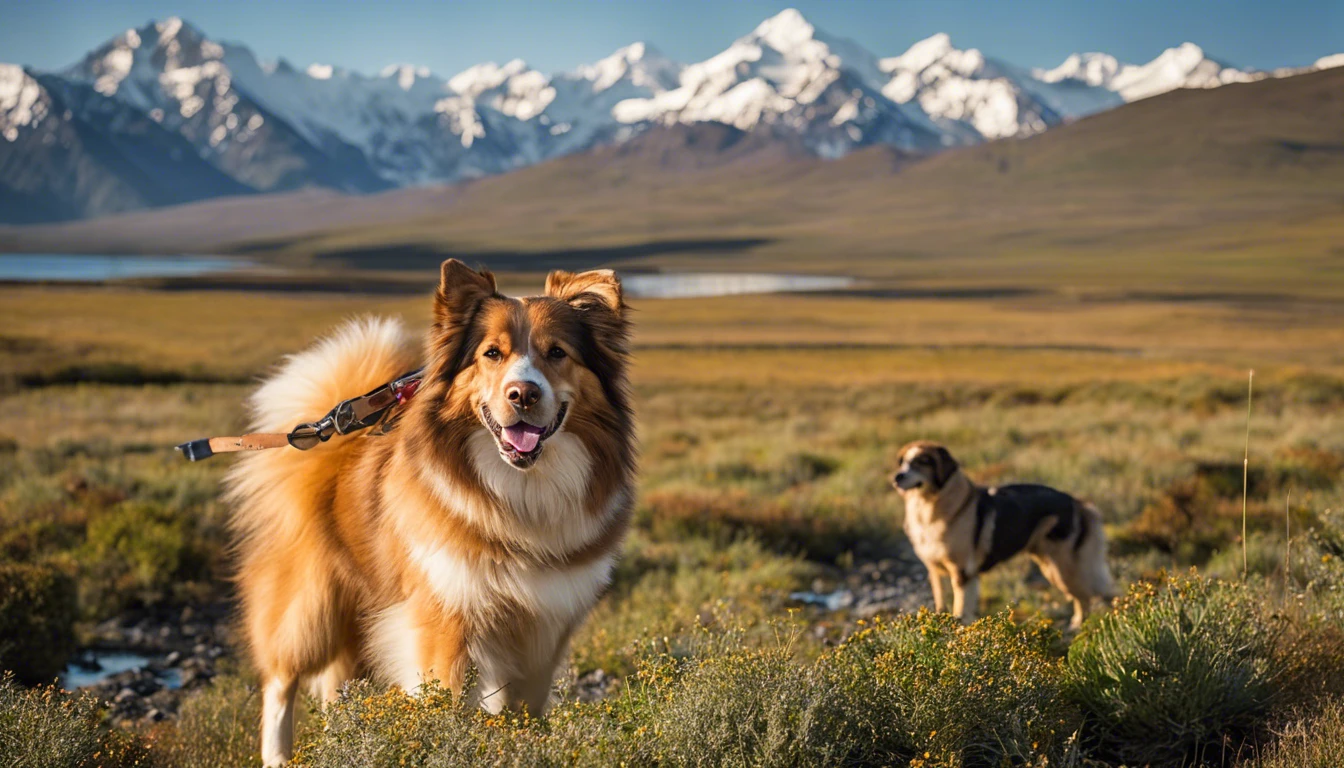Are There Special Regulations for Moving Pets to Alaska?
Yes, there are special regulations for moving pets to Alaska. Pets must have a current Certificate of Veterinary Inspection or Health Certificate, and some may require an import permit. Alaska also has strict regulations on the import of certain animals.

Alaska Animal Importation Requirements
Moving your pets to Alaska with a moving company involves a bit more than just packing them up in the car. The state has specific regulations in place to ensure the health and safety of all animals entering its borders. Here's what you need to know about Alaska's animal importation requirements when moving to Alaska:
First and foremost, any animal transported to Alaska by a moving company must have a current Certificate of Veterinary Inspection (CVI) or Health Certificate. This document verifies that your pet is healthy and free from contagious diseases. It should be issued by a licensed veterinarian who has recently examined your pet.
It's important to note that Alaska does not accept the USDA 7001 form. Instead, you can provide an electronic health certificate from one of the following authorized providers when moving to Alaska:
- Global Vet Link
- New Planet Technologies
- Vet-Sentry
Alternatively, you can also submit a paper copy of the USDA VS 7001 Form, or the Animal Health State Certificate with a certificate number.
In addition to the health certificate, some animals may require an import permit. This document needs to be obtained by the issuing veterinarian. It's best to check with your vet or the Alaska Department of Fish and Game to see if your pet requires this additional paperwork when moving to Alaska.
Remember, these requirements are in place to protect both your pet and Alaska's unique wildlife. Make sure you have all the necessary documents in order before you start your journey with a moving company.
If you are moving multiple pets, such as three cats from Seattle to Anchorage, your journey may span 2300 miles and potentially take 5 to 7 days if you are driving the Alcan Highway. This would require preparations such as cat crates, a disposable litter station, and allowing the cats freedom in the vehicle after a few days. Alternatively, you could choose to fly, which is quicker but costly, with vets providing sedation or anxiety medication. Regardless of the method, ensuring the cats are comfortable and secure during the move and adjustment to their new home is crucial. Quora
Also, it's important to note that Alaska's regulations on animal import are among the strictest in the nation. For instance, it's illegal to own, possess, import, release, export an elephant, or assist in such actions regarding live game animals, which include all bird, reptile, and mammal species, excluding domestic ones. This includes but is not limited to, exotic animals such as wild felines, wolves, bears, monkeys, and also specifies prohibition post-January 23, 2002, against owning or transacting wolf hybrids. Quora
In fact, Alaska's Department of Fish and Game has a detailed list of approved animals for entry or possession in Alaska by category. Non-listed mammal, bird, or reptile species cannot be imported or possessed. Approved birds include canaries, chickens, certain non-prohibited cockatiels, ducks, geese, and parrots, among others. Legal mammals for ownership include domestic species such as alpacas, cats, dogs, ferrets, and rabbits, excluding feral or wild variants of some species. Legal reptiles encompass nonvenomous species such as certain lizards, snakes, and turtles. The possession or export of native Alaska species as pets is illegal, but non-native fish, shellfish, and amphibians may be imported with a permit.
Therefore, when moving to Alaska with a moving company, it's important to familiarize yourself with the state's animal regulations to ensure a smooth transition for your pets.

Alaska Airlines Pet Policies
Alaska Airlines has revised its pet policies, with the changes implemented in December 2021. The new rules are designed to ensure the health and safety of the animals being transported. The policy allows passengers to bring small pets in the cabin and larger pets in the cargo hold, subject to specific requirements. Pets allowed include dogs, cats, rabbits, and household birds, with a minimum age of eight weeks and full weaning. However, brachycephalic breeds are excluded from the cargo compartment due to their risk of respiratory issues during flight. A maximum of two pet carriers is allowed in the main cabin if an adjacent seat is purchased. Also, cabin restrictions allow one pet carrier in first class and up to five in the main cabin per flight. Pets must stay in their container throughout the boarding, flight, and deboarding processes 🔗.
The updated guidelines now require all pet owners to provide health and acclimation statements for their pets. These documents serve as proof that your pet is in good health and can adjust to different environmental conditions. A health certificate issued within ten days of the flight is required for pets traveling in the cargo compartment 🔗.
Here are the specific requirements for different types of pets:
-
Dogs, Cats, and Ferrets: If your pet is over three months old, you'll need to provide evidence of a current rabies vaccination. This is an essential step to prevent the spread of this dangerous disease. In addition, you must also provide a health certificate issued within the last 30 days, confirming that your pet is fit to travel.
-
Pets with Medical Exemptions: If your pet has a medical exemption from the rabies vaccination, you must provide a waiver. This waiver should clearly state the reason for the exemption and must be approved by a licensed veterinarian.
-
Service Dogs: Service dogs, including those trained by owners for psychiatric conditions like PTSD, are permitted and can fly without the need for paperwork, under the ADA law. They are considered medical equipment and are essential for some passengers' medical needs, helping with tasks such as alerting to oncoming panic attacks or leading to safety🔗.
Remember, these new policies are designed to protect your pet and ensure they have a safe journey. It's crucial to comply with them when planning your move to Alaska. Booking early is advised due to limited spots per flight🔗. Additionally, the airlines charge a fee of $100 per flight for both checked and carry-on pets, which can be offset with certain credit cards.
🔗: (https://www.alaskaair.com/content/travel-info/accessible-services/specialservices-support-animals)
🔗: (https://www.uponarriving.com/alaska-airlines-pet-policy)

Importation Regulations Based on Disease Outbreaks
When it comes to moving your pets to Alaska, it's important to be aware of certain regulations that may apply if you're coming from an area with recent disease outbreaks. These rules are in place to protect the local animal population and are strictly enforced.
Take rabbits, for example. If you're bringing a rabbit from a region that has seen a positive disease detection within the past six months, you will need to secure an approved import permit. This is a standard precautionary measure to prevent the spread of diseases similar to how the U.S. Food and Drug Administration (FDA) has regulatory requirements for testing imported seafood for norovirus contamination.
Here are some key points to remember:
- If your pet is a rabbit and you're coming from an area with recent disease outbreaks, you will need an approved import permit.
- Always check the latest updates on disease outbreaks in your current area before planning your move. This will help you understand if any special regulations apply to you.
- Reach out to the Alaska Department of Fish and Game or your local vet for more information on securing an import permit.
Additionally, it's worth noting that the U.S Customs and Border Protection has a list of prohibited and restricted items that you should review before planning your move. This list includes certain animals and animal products, among other things.
Furthermore, it's crucial to recognize that these regulations can vary depending on the type of pet you're moving. For instance, the importation rules for meat products in Canada require that the products be commercially packaged and properly labeled, and there are quantity limits based on the length of stay and type of meat. Such rules are enforced by the Canadian Border Services Agency (CBSA) or the Canadian Food Inspection Agency (CFIA).
Always remember, these regulations are in place for the health and safety of all animals. It's our responsibility as pet owners to adhere to them.

Role of Accredited Veterinarians
If you're planning to move your pet to Alaska, you'll need to work closely with an accredited veterinarian. The role of a vet in ensuring the safe and legal relocation of your pet cannot be overstated. Let's break down what they do:
-
Issuing Health Certificates: One of the most important documents you'll need for moving pets to Alaska is a health certificate. Your vet will examine your pet to certify that they are healthy and free from any contagious diseases. This certificate is usually valid for 30 days from the date of issue. It's important to note that to issue these certificates, a veterinarian must be licensed in the United States, which typically requires them to be a U.S. citizen or a legal resident with a work visa.
-
Ensuring Vaccine Timeliness: Vaccinations are crucial for your pet's health. Your vet will ensure all necessary vaccines have been administered and are up-to-date. For dogs, this typically includes Rabies, Distemper, Parvovirus, and Adenovirus. For cats, Feline Herpesvirus, Calicivirus, and Panleukopenia vaccines are usually required.
-
Including Required Test Results and Statements: If additional tests are necessary, such as a titer test for rabies antibodies, your vet will include these results in the health certificate. They'll also add any necessary statements, like confirming that your pet is free from parasites.
-
Submitting Certificates to Animal Health Officials: Once the health certificate is complete, your vet will send it to the appropriate animal health officials. This usually includes the officials in your current state and in Alaska. It's worth mentioning that veterinarians in Alaska have a unique advantage, as they often have practical experience in working with a diverse range of wildlife, including large predators and other native animals.
Remember, the regulations can vary, so it's crucial to discuss your plans with your vet well in advance of your move. They'll provide you with the most accurate, up-to-date information to ensure a smooth transition for you and your pet. As a note, Alaska has a two-year Veterinary Medical Science (VMS) program in partnership with Colorado State University, which allows students to complete their first two years of veterinary school in Alaska before transferring to Colorado. This program ensures that the state is equipped with highly trained professionals capable of handling the unique challenges of animal health in Alaska.

Procedures for Moving Pets to Alaska
Moving your pets to Alaska involves a bit more than just packing them up in a carrier. The U.S. Department of Agriculture's Animal and Plant Health Inspection Service (APHIS) has laid out some specific procedures that you need to follow. Let's break it down:
-
Read the Pet Travel Guide: The first thing you should do is go through the Pet Travel Guide provided by the APHIS. This guide covers all the basics you need to know about moving pets, not just within the U.S., but also internationally.
-
Check Destination Country Requirements: Even though you are moving within the U.S., it is still important to check the destination state requirements on the APHIS website. This will give you a good idea of what Alaska requires for incoming pets.
-
Submit Required Paperwork: Once you have all the information, the next step is to submit the necessary paperwork. This can be done through the Veterinary Export Health Certification System (VEHCS), an online platform that facilitates the process of getting your pet's health certificate endorsed. If you're not comfortable using the online system, you can also ship the paperwork directly to the USDA Endorsement Office.
Remember, each state might have different regulations when it comes to pet travel. It's always a good idea to check these requirements well in advance to ensure a smooth transition for your furry friends.
In addition to the above steps, your journey to Alaska with pets can be approached in one of two main ways, based on the specific example of moving three cats from Seattle to Anchorage, AK.
The first method involves driving the Alcan Highway with the pets in the vehicle, ensuring each pet has a crate and a disposable litter box. This trip could take 5 to 7 days, factoring in stops for the pets to eat, drink, use the litter box, and relax, potentially in motel rooms.
The second method involves flying directly with the pets, with one person per pet. Pets may be sedated or given anxiety medication for the flight, as recommended by a vet. This method is quicker but can be expensive.
Whichever method you choose, it's important to prepare for the potential stress on the pets due to a new environment. The journey requires substantial preparation for pet comfort and safety, including considerations for food, water, and litter needs. If driving, be aware that breakdowns during the drive pose an additional risk, and it is suggested to have a communication device like a CB radio. Transitioning pets to their new home will require time for adjustment.
If you're considering a different route, one option could be to use a ferry service. While this might require a longer journey, it could be a more comfortable and less stressful option for your pets. Be aware that ferry services may have their own specific requirements and regulations for transporting pets, and you may be charged an additional fee for their transportation. Therefore, it is important to check the specific requirements of the ferry service you are planning to use. Regardless of the method you choose, it's crucial to prioritize the comfort and safety of your pets during the journey 🔗.






